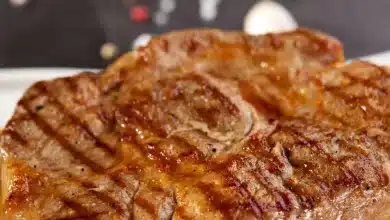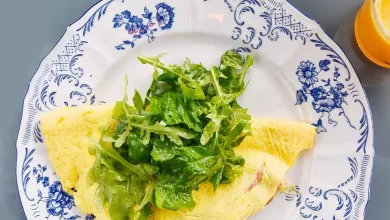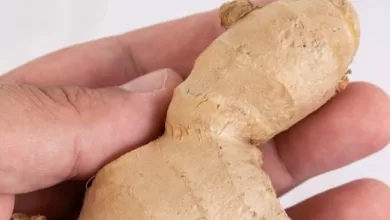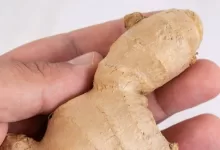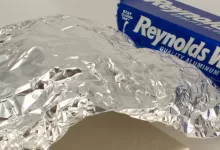How To Remove Rust & Hard Water Stains From A Toilet Bowl
..Advertisements..
CONTINUE READING BELOW
Sharing is caring!
Your bathroom speaks of your personality, some people say. If it’s sparkling – you are hygienic. If not, you are unhealthy. Therefore, rust stains in toilet bowl are not a pretty sight – particularly for your visitors. They will find it uncomfortable to use. Worse, they will judge you according to your restroom. More than these, a grimy toilet is not healthy for you and your family. You may not be aware but different germs or bacteria abound in your toilet seat. These can cause sickness.
Instead of spending a lot of your hard-earned money on medical costs, why not consider washing your bathroom on a regular basis? To successfully remove bowl ring and stains, you may want to educate yourself first. Read on.
Why my bowl has rust?
The appearance of rust is the result of your laziness – or forgetfulness – in cleaning your bathroom. Hard water mineral deposits emerge but before you notice them, they have already built up. These can be because of your use of deep well water that is loaded with iron. Rust appears when the iron starts to oxidize; thereby, forming an unsightly yellow or brown surface on the bathroom fixtures.
Rust stains may also be present because one of the parts of the bowl is already in corroded condition.
Why do stains and poop stick on toilet bowl?
It is common for bowls to have blotch. As mentioned above, these are caused by the buildup of mineral deposits in hard water. Staining also takes place when galvanized pipes are leaking and are already tarnished because you never pay attention to it.
On the other hand, poop that sticks to bowl is a sign that it contained too much oil. Dr. Jean-Pierre Raufman, a gastroenterologist at the University of Maryland School of Medicine, as reported by Live Science, that oil from stool is evident because it floats in the water. This indicates that the “body isn’t absorbing the fats properly.” Diseases like chronic pancreatitis can be reasons behind this.
What are the best products to remove stains in a bowl?
The market offers a number of bowl cleaners to households; some even contain bleach. Some people prefer these than other do-it-yourself cleaning formula because either they do not have the time to make one or they do not want to do so thinking that it is not an easy task.
They believe it is better to buy a ready-made item from a store than to waste time and effort preparing homemade cleaning formula. However, some washing items include harsh washing agents and these may be unsafe to use.
You will be surprised to know that it is actually easy to formulate your own bowl washing product. Some of the ingredients are just right in your kitchen. Check the list below.
- Vinegar
White vinegar is a better replacement for bowl washing products that smell strong and contain harsh chemicals. It is safe, affordable and is readily available in your kitchen. It is also a natural deodorizer and disinfectant.
- Borax Powder
Borax is different from boric acid. It is a natural mineral with IUPAC name sodium tetra-borate decahydrate. It is as toxic as an ordinary baking soda or table salt in huge amounts. Some toothpastes and hand soaps contain borax.
Your toilet bowl is safe from borax but to be sure, you can perform a test on a hidden spot. If no discoloration happens, you may proceed with your task. After using, keep it in a place where children and pets cannot reach or see it.
- Lemon Juice
Lemon juice is rich in acids, which makes it an ideal washer for bathrooms. It mainly helps to eliminate stains and grime.
- Tea Tree Oil with Baking Soda and Vinegar
This formula makes use of the rough quality of baking soda, the acidity of vinegar, and the antibacterial properties of tea tree oil. Baking soda and vinegar mixture is also effective in removing tough dirt or stains in bowls.
- Baking Soda
Baking soda or sodium bicarbonate is a safe chemical; hence, many homeowners prefer to use this, as well as vinegar, in washing their bathrooms. This alkaline, crystalline powder contains a lot of useful washing properties. It can soften hard water and eliminate stains from grease, oil, and alcohol.
- Soda Pop
Yes, you read it right. Even a bottle of soda can be your partner in making your toilet bowl dirt-free. Its gentle acids can help you eliminate dirt and rust stains.
- Pumice Stick
Some say that this is the most effective and safest way to clean your toilet seat. Users were happy to note that it was able to remove stubborn dirt and stains.
Best way to remove bowl stains and bowl ring
(using the products above)
Vinegar
- Make a vinegar solution – half water and half vinegar. However, if you think that the water spots are thick or crusty, you may increase the vinegar content.
- Spray the vinegar solution to the bowl. Make a few more sprays in the highly affected areas. Leave it to soak. Some users opt to pour the vinegar solution on a cloth for better absorption.
- Start your washing. If some areas are still with hard water spots, reapply the vinegar solution. Leave it to soak again then clean.
- Repeat the procedure until you are satisfied with the result.
Borax
- Get one quarter cup of borax and dust it into the bowl.
- Rub the powder in all areas of the bowl using a brush. This process will assist in the removal of stains, as well as odor and bacteria.
Lemon Juice
- Cut lemon into half. Rub the first half directly on the affected areas. Stains should come off easily.
- If you have come across spots stubborn dirt, wipe these with lemon juice again. Leave for a while to allow the acid to do its work. Rub with cloth.
- If this process does not work, it is time to combine lemon juice with a laundry booster.
- Get a small bowl and pour it with one cup of borax and half a cup of lemon juice.
- Stir until the mixture turns into paste.
- Rub the paste into the bowl using a sponge. Do not scrub; allow it to sit for a couple of hours. This paste will help you remove rust stains, especially in the ring.
Baking Soda with Vinegar
- Sprinkle a half cup of baking soda into the toilet bowl.
- Spray it with vinegar.
- Let it sit for 10 to 30 minutes, depending on how long you think it will take for the dirt to come off.
- Wash using brush.
- If you can still see stains, mix another half cup of baking soda with warm water. Rub it in the affected spots.
Bathroom washer with Bleach
- Wash the underside first. Apply bathroom cleaner with bleach. Leave it on for a few minutes. Check the label of the product if there’s a specific amount of time that the washer needs to sit on the toilet seat.
- Scrub it using brush until the stains are gone, then rinse.
- Repeat the same process in other areas of the bowl.
Tea Tree Oil with Baking Soda and Vinegar
- Sprinkle half a cup of baking soda directly into the seat.
- Spray it with half a teaspoon of tea tree oil and then a cup of white vinegar.
- Leave it for a few minutes.
- Scrub using the brush.
- Rinse and flush.
Soda Pop
- Pour your seat with a bottle of soda, particularly around the rim to make sure that the liquid reaches the whole interior.
- Leave it for one hour.
- Scrub it then flush.
Pumice Stick
- Wet the pumice stick with water.
- Apply it directly in the dirt and stains.
- Once you see that your bowl is sparkling with spotlessness, rinse.
Important note: Before you begin your cleaning, it is essential that you open the door and window in your bathroom for proper ventilation. Wear rubber gloves to protect you against germs. If possible, use protective eyewear to avoid hurting your eyes.
Likewise, tell your family not to use the bathroom for a while because you are washing it. Better yet, leave a note right at the door if you going out for a few minutes because you need to let the solution soak into the seat.
Be sure to clean all the items that you used (such as brush or scrub) before you keep them in storage.
There are some cases when you will not be able to remove rust stain because it has been there for a long time. This should be a lesson for you to clean your bathroom every day and schedule deep washing every weekend.
How much does it cost?
Cleaning your bowl will not cost you much, specifically if you will opt to use white vinegar. You will only need to partner this with a spray bottle and you are off to a good start.
Borax can be found in grocery stores. It can also be bought online.
To wash your seat using lemon, you may need an average of 2 pieces. A big piece can give you half a cup of lemon juice. One lemon may cost you under $1.
Bowl cleaner with bleach costs about $9 to $16. Baking soda is priced between $3 to $16, depending on the brand and quantity. You may have to spend a dollar or less for a soda pop.
How often ?
Bowls are used every day for so many times – but they are the most overlooked when it comes to washing. You only realize that you have forgotten to clean it when dirt and stains are already too obvious to ignore. Because of this scenario, you only make things difficult for you. Rust stains – particularly from hard water deposits – are not easy to remove. If only you grab your toilet brush and bowl cleaning product every week, doing the job should be a breeze.
Cleaning should be made every day; deep cleaning should be done once every week. Everyday washing lets you avoid buildup of mineral deposits. You only need a few minutes to do this. Just rub the interior of the toilet bowl (from the top of the bowl rim to below the lip to the rim holes then down) with water.
WHAT ARE THE GERMS, BACTERIA, OR VIRUS THAT COULD STICK IN THE BOWL ?
According to WebMD, harmful germs lurk in bowls, particularly those that do not receive regular washing. These include gastrointestinal viruses, enteric pathogens, skin and respiratory organisms, dermatophytic fungi, and other residual fungi.
Gastrointestinal viruses
Gastrointestinal viruses, which include norovirus, may result to stomach sickness. These can easily spread and stay in a solid surface, such as the seats, for as long as a week.
Enteric Pathogens
These are organisms transmitted by contaminated foods and therefore can be passed on in feces: salmonella, E. coli, campylobacter, and shigella. E. coli O157:H7, in particular, causes severe diarrhea with bloody stools. The assistant professor of clinical laboratory science at Saint Louis University, Donna Duberg, MA, MS, related that it was the bacteria that caused the death of four children and the sickness of a lot of people at Jack-in-the-Box restaurants in California in 1993.
Skin and Respiratory Organisms
One example is staphylococcus aureus bacteria, which include Methicillin-Resistant Staphylococcus Aureus (MRSA) strain, and Group A Strep, more popularly known as “flesh-eating” bacteria.
Dermatophytic Fungi
Dermatophytic Fungi, such as athlete’s foot, can be acquired by just walking barefoot inside the bathroom.
Other Residual Fungi
These include those that are found in showers. They do not infect but do worsen allergies and asthma.
Sharing is caring!
…Advertisements…
CONTINUE READING BELOW
TIPS
Tips & Tricks
